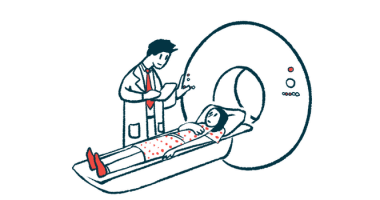Study Reveals Cellular Processes That May Drive CLN5 Disease
Mutations affect fatty molecule metabolism, autophagy, oxidative stress

CLN5 disease, a form of late infantile Batten disease, disrupts fatty molecule balance and autophagy (the waste disposal system of cells), and increases cellular susceptibility to a type of damage called oxidative stress, according to data from preclinical models of the disease.
Also, many of the molecules whose levels were found to be altered in these models have also been previously implicated in other Batten types.
Two medications whose combination was previously shown to slow disease progression in preclinical models of juvenile Batten disease (also called CLN3 disease) were found to reduce fatty molecules and oxidative stress, and rescue motor impairment in models of CLN5 disease.
These findings shed light on CLN5 disease’s underlying molecular mechanisms and suggest common pathways across Batten forms that may be targeted by current or future therapies, the researchers noted.
The study, “Lysosomal Proteomics Links Disturbances in Lipid Homeostasis and Sphingolipid Metabolism to CLN5 Disease,” was published in the journal Cells.
Batten disease, also known as neuronal ceroid lipofuscinoses (NCLs), is caused by mutations in at least 13 different genes. These mutations lead to the toxic accumulation of waste molecules inside lysosomes — the recycling compartments of cells — mainly in brain cells, leading to nerve cell damage and death.
Mutations in the gene CLN5, which provides instructions to produce a lysosomal protein of the same name, are the cause of CLN5 disease. While the CLN5 protein is thought to interact with proteins that are faulty in other Batten forms, its function remains largely unclear.
Previous studies in preclinical models of the disease suggest that this protein is involved in the function and movement of lysosomes within cells, metabolism of fatty molecules, mitochondrial function, autophagy, and oxidative stress.
What’s the link between autophagy and oxidative stress?
Mitochondria produce energy for cells, while autophagy is the process by which cells break down and recycle old or faulty proteins and components they no longer need, preventing their potentially toxic accumulation.
Oxidative stress is a type of cellular damage resulting from an imbalance between the production of potentially harmful oxidant molecules (mainly derived from mitochondrial function) and the ability of cells to clear them with antioxidants.
Autophagy is a major cellular defense against oxidative stress and toxic accumulation of molecules.
In the new study, a team of researchers in Italy and Finland set out to evaluate the effects of CLN5 mutations on the levels of proteins located in lysosomes and to identify the most affected cellular mechanisms.
The best candidates identified through analyses of more than 1,100 proteins in CLN5-deficient mice and lab-grown cells were further validated in several disease models. These included lab-grown cells from CLN5 disease patients, neuron-like cells lacking CLN5, and brain sections of CLN5-deficient mice.
Results showed that an altered metabolism of fatty molecules, including sphingolipids, and an increased susceptibility to oxidative stress were “the most relevant events in CLN5 disease,” the researchers wrote.
Autophagy-related proteins were also significantly altered in the absence of CLN5, as well as master regulators of lysosomal and mitochondrial formation and neuroprotective proteins.
Sphingolipids are a type of fatty molecule known to accumulate in the brain upon oxidative stress, while high levels of the enzymes and byproducts of their metabolism promote oxidative stress. Also, an altered fatty molecule metabolism and mitochondria-produced oxidant molecules are known to induce autophagy.
These findings “reinforce our understanding of an interplay between lipid [fatty molecule] metabolism, autophagy, and oxidative stress, thereby leading to the modulation of cellular [balance], cell survival, and death,” the researchers wrote.
Similar processes have also been implicated in different Batten models, and the observed “network of dysregulated lysosomal proteins” in these CLN5 disease models “links it further to other NCL proteins,” they added.
“Altogether, this strengthens a scenario of a common [disease-associated] pathway(s) amenable for future targeting in NCL pharmacological studies,” the team added.
With this in mind, the researchers investigated the effects of two medications — whose combination have previously shown promise in juvenile Batten models — in a cellular model and a newly-developed zebrafish model of CLN5 disease.
They consisted of trehalose — a natural autophagy-promoting sugar molecule found in plants, fungi, and bacteria — and miglustat, which partially blocks the production of the fatty molecules.
Trehalose is also being evaluated as a potential treatment for amyotrophic lateral sclerosis, another neurodegenerative disease. Miglustat is sold by Actelion under the brand name Zavesca as a treatment for type 1 Gaucher disease, which is also caused by the toxic buildup of molecules in lysosomes.
How did CLN5 disease models respond to trehalose and miglustat?
The team found that treatment with either molecule promoted a reduction in oxidative stress and fatty molecules in a cellular model of CLN5 disease, and an improvement in motor function in the zebrafish model.
Miglustat appeared to be superior to trehalose at rescuing oxidative stress, while only a combination of both treatments fully normalized fatty molecule storage.
“Our data advance the general understanding of disease mechanisms and modifying factors in CLN5 disease, which are recurring in other NCL forms, also stimulating new pharmacological treatments,” the researchers wrote.
“It is tempting to hypothesize the possibility to expand the efficacy of trehalose and its combination with miglustat in other forms of NCL,” they added.
A combination of trehalose and miglustat, dubbed BBDF-101, was being jointly developed by Beyond Batten Disease Foundation and Theranexus for the treatment of juvenile Batten.
Early this year, the partners decided to advance the development of miglustat alone (then named Batten-1) and launched a Phase 1/2 trial (NCT05174039) to test its safety and preliminary efficacy in six juvenile Batten patients, 17 and older.
Should results be positive, the partners plan to confirm the therapy’s benefits in a larger Phase 2/3 trial, expected to start in the first half of 2023.








